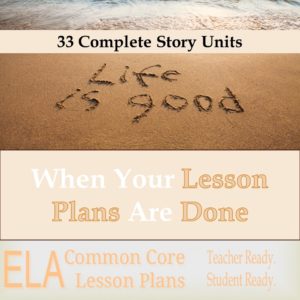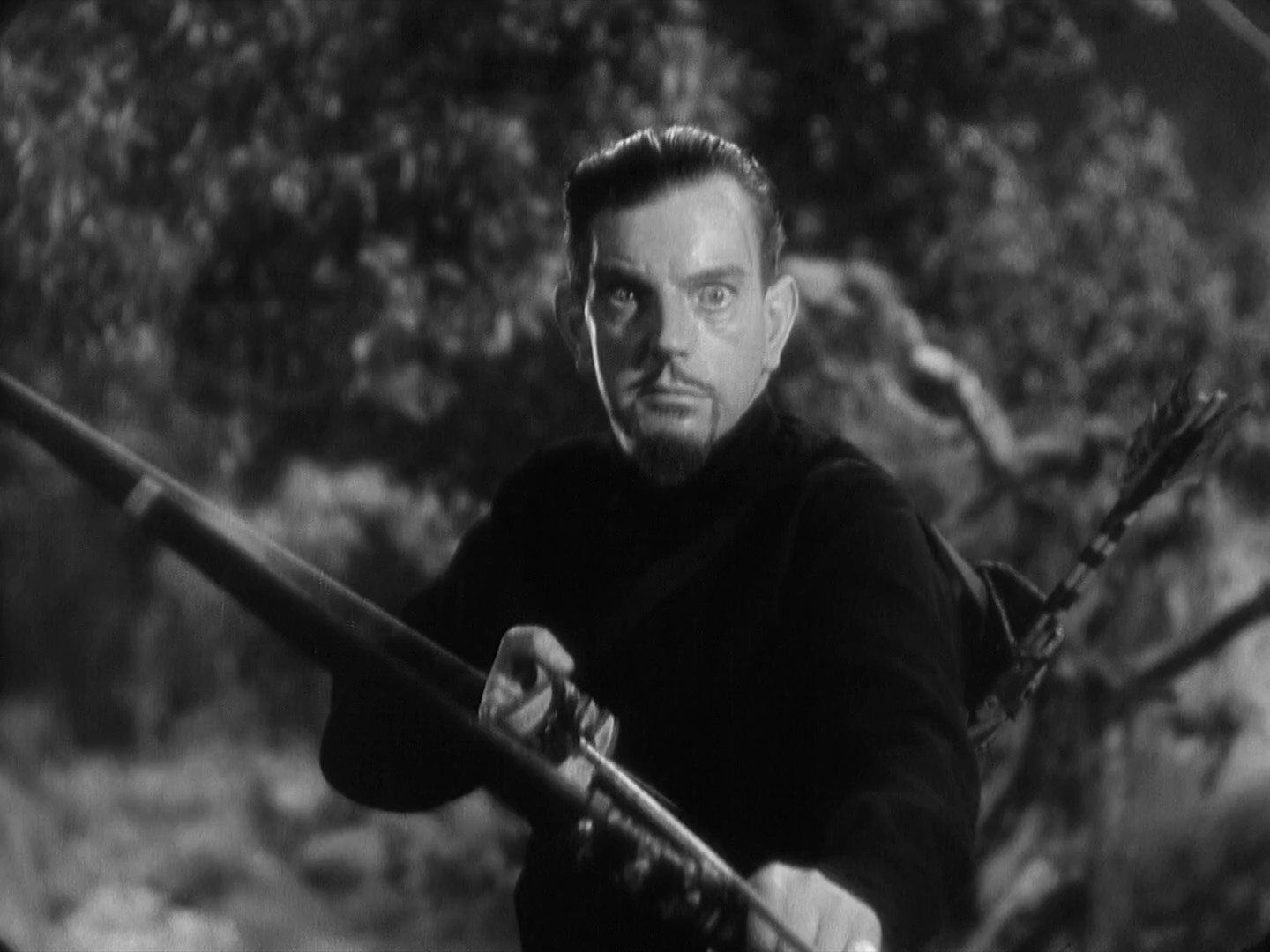Teaching “The Most Dangerous Game”
There was no sound in the classroom as you sat there trying to think up lesson plans for “The Most Dangerous Game” but the muffled throb of the fan that cooled your sweat as you tried to think of “Most Dangerous Game” activities, and the swish and ripple of the machetes your supervisor planned on bringing to your class for your first official evaluation.
An abrupt sound startled you. Off to the right you heard it, and your ears, expert in such matters, could not be mistaken. Again you heard the sound, and again. Somewhere, off in the blackness, your principal had fired another teacher for having horrible activities for “The Most Dangerous Game.” That’s why you visited this site. You’re looking for some “Most Dangerous Game” lesson plans. And you found them.
Before we begin, here’s a little something to teach suspense in “The Most Dangerous Game”: Suspense in the”Most Dangerous Game” Chart
Post Reading Assignment

Ever feel like the prey in your own classroom?Feed those old lesson plans to the dogs and fight back with “The Most Dangerous Game” Unit Plan.
Telling students what you want before they finish is a good idea. Use this activity for teaching “The Most Dangerous Game” and teaching writing. Have each student do the following after reading the short story:
- Write a brief summary, 100-200 words.
- Write a brief analysis, extolling its literary merit, 150-200 words.
- List potential lesson activities, 3-4 ideas in a bulleted list.
- Give each section a rating of 1-5 stars.
I’ve cleverly written this web page as an example.
Summary of “The Most Dangerous Game”
Rating: 4/5 - Great plot, suspenseful; a bit far-fetched
Sanger Rainsford discusses hunting with his friend Whitney as the two travel by boat in the Caribbean just off Ship Trap Island. Whitney goes to bed and Rainsford falls into the “blood warm” waters of the Caribbean as the boat motors toward its destination. Rainsford hears gunshots, swims toward them, and reaches the shore where he finds a mansion inhabited by the eccentric hunter General Zaroff.
Zaroff tells Rainsford he hunts the most dangerous game on his island, people. Rainsford is mortified when he is chosen to become the most dangerous game in Zaroff’s most dangerous game. Zaroff has several chances to kill Rainsford, yet chooses not to. Zaroff appears to have won the game, but Rainsford jumps off a cliff, swims to the other side of the island, and beats Zaroff back to his mansion, where he feeds Zaroff to his dogs.
Analysis of “The Most Dangerous Game”

Life is good when your short story lesson plans are finished for the year.
Rating 5/5: It contains my two favorite literary devices: puns and irony.
The following is worth analyzing in “The Most Dangerous Game.”
- Irony: Examples include Rainsford turning from hunter to hunted back to hunter, Zaroff passing up several winning opportunities, and Rainsford’s surprise at the end.
- Pun: What is the most dangerous game? Game in the title of the story refers to the animal/person being hunted; it also refers to the sport of hunting, specifically Zaroff’s version of the sport.
- Suspense: Connel uses dangerous action, pacing, and foreshadowing to create suspense.
- Foreshadowing: Ship Trap Island and Whitney and Rainsford’s conversation at the beginning of the story are two obvious examples of foreshadowing.
- Hunting: Some students hunt; others oppose it. Sounds like a good time for a debate.
- The 2nd amendment: Zaroff governs Ship Trap Island, owns several guns, and strips Rainsford’s right to possess a gun. Zaroff’s advantage is superior.
- Conflict: “The Most Dangerous Game” contains a classic man v. man conflict.
The Most Dangerous Game Learning Activities

This is Zaroff, in case you were wondering.
Use these lesson activities to improve your teaching of this short story.
Prereading Surveys: Create a simple True/False survey before reading the story.
- ___ Hunting is a sport.
- ___ Animals have no feelings.
- ___ Hunting is evil.
- ___ Hunting is unfair.
- ___ Animals have emotions.
- ___ Strength is more important than intelligence.
- ___ Bringing a gun to a knife fight is fair.
Prereading Activity #2 (geared toward students who need motivation):
- Write “The Most Dangerous Game” on the board. Put a square around it.
- All around the square write the following words: hunting, reason, ship, survival, dangerous, mansion, dogs, island, game.
- Tell students you’re going to read “The Most Dangerous Game.” The words around the box are associated with the story.
- Instruct students to make a prediction using each word in a sentence.
Character/Conflict Activity: Instruct students to fill out a chart on the two characters:
In the far left column, write “Rainsford” on the top row, “Zaroff” in the middle row, and “Me” in the bottom row.
- In the top row, write “Intelligence” in the 2nd column, “Hunting Ability” in the third column, “Strengths” in the fourth column, “Attitude Towards Animals” in the fifth column, and “Attitude Towards Humans” in the last column.
- Instruct students to fill out the chart as they read.
- Write an essay. The question is “Who is the better hunter and why?” The initial reaction is that Rainsford is. At the end, he sleeps in a comfortable bed while Zaroff gets eaten by dogs. A closer look at the evidence, however, indicates that Zaroff loses on purposes. Why would he lose on purpose? He’s bored and depressed with the ease of hunting. There is plenty of evidence to support this claim. On the other side, though, is the assertion that Zaroff has a huge home island advantage, superior weapons, a giant assistant, and a pack of dogs and should win easily.
ELA Common Core Standards Covered
The previous assignments cover the following ELA common core standards for reading and writing. This is for your administrator, not your kids. Kids need student-friendly worded objectives.
- RL.9-10.1 Cite strong and thorough textual evidence to support analysis of what the text says explicitly as well as inferences drawn from the text.
- RL.9-10.2 Determine a theme or central idea of a text and analyze in detail its development over the course of the text, including how it emerges and is shaped and refined by specific details; provide an objective summary of the text.
- RL.9-10.3 Analyze how complex characters (e.g., those with multiple or conflicting motivations) develop over the course of a text, interact with other characters, and advance the plot or develop the theme.
- RL.9-10.5 Analyze how an author’s choices concerning how to structure a text, order events within it (e.g., parallel plots), and manipulate time (e.g., pacing, flashbacks) create such effects as mystery, tension, or surprise.
- W.9-10.2 Write informative/explanatory texts to examine and convey complex ideas, concepts, and information clearly and accurately through the effective selection, organization, and analysis of content.
The Movie
The movie isn’t very good. There is, however, some outstanding unintentional comedy (the shark attack at the beginning, for example).
Short Story Guides
Teaching the Reading Literature Common Core Standards are easy with short stories.
- The Black Cat
- The Cask of Amontillado
- The Masque of the Red Death
- The Necklace
- The Most Dangerous Game
- The Interlopers
- The Gift of the Magi
Last Updated on June 3, 2021 by Trenton Lorcher
Share This: